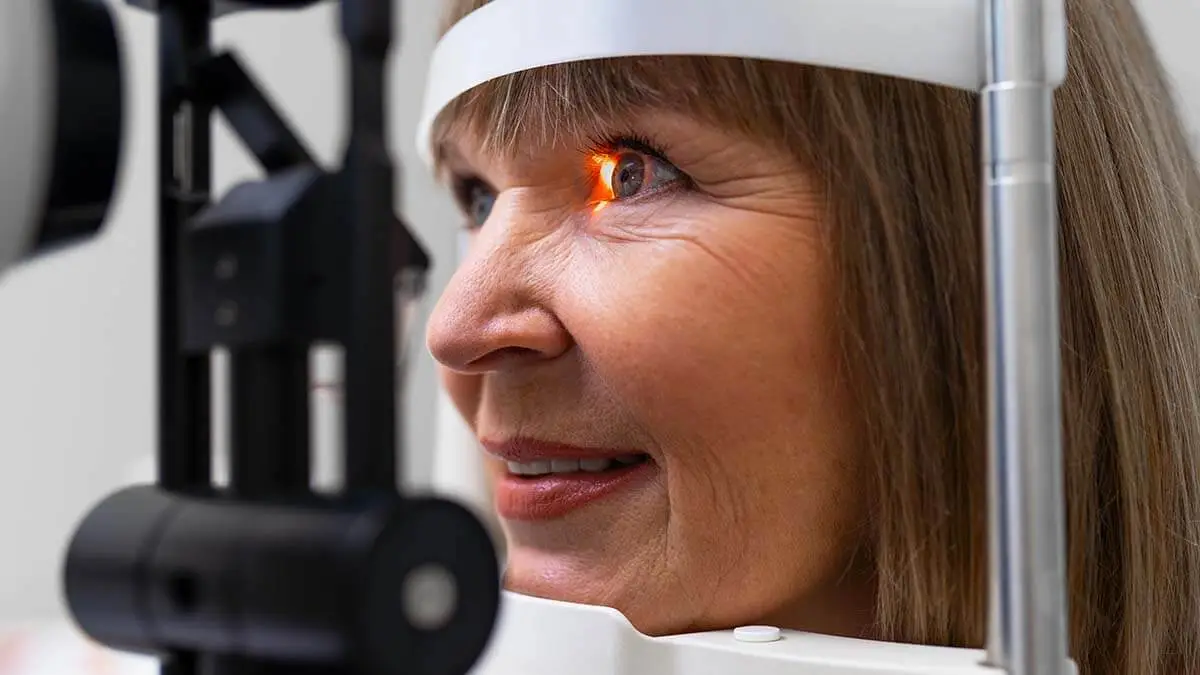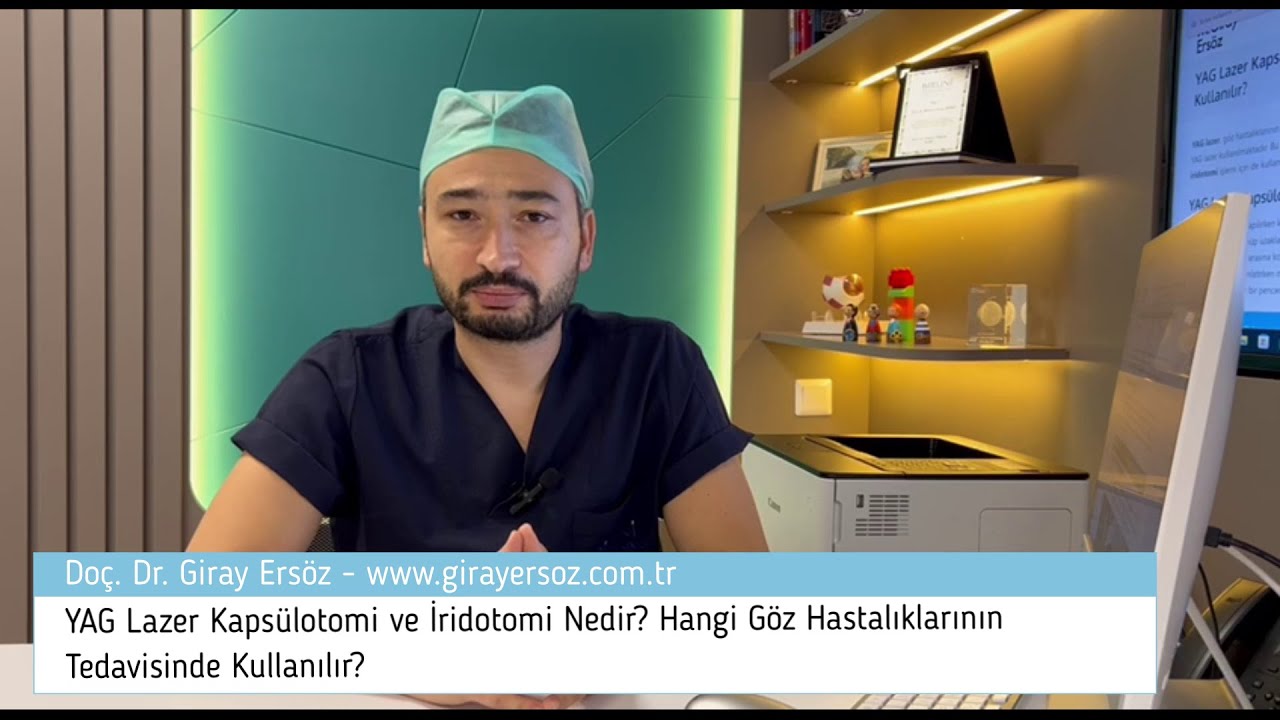YAG laser is a versatile tool used to treat various eye conditions. It plays a key role in addressing the cloudiness that can develop after cataract surgery, a process known as YAG laser capsulotomy. Additionally, YAG laser is utilized for YAG laser iridotomy in patients with angle-closure glaucoma. In this article, I will first explain the YAG laser capsulotomy procedure, followed by a detailed overview of YAG laser iridotomy.
What is YAG Laser Capsulotomy?
During cataract surgery, a small opening is made in the anterior capsule of the cataractous lens. The lens is then broken into small fragments and removed through this opening using the PHACO technique. While the anterior and posterior capsules remain intact, an artificial intraocular lens is placed between them. Over time, the posterior capsule behind the artificial lens can become cloudy, leading to reduced vision. This condition is commonly explained to patients as the lens becoming “calcified” or “dirty.” YAG laser capsulotomy is a procedure that creates a clear opening in the center of the cloudy posterior capsule using a YAG laser, restoring clarity and improving vision.
For more information, you can watch the video below, followed by a written explanation of the topic.
For more detailed information about cataract surgery, you can read my article, “Understanding Cataract: Surgery, Risks, and Recovery”
How is YAG Laser Capsulotomy Performed?
YAG laser capsulotomy is typically performed in an outpatient setting, specifically in a laser room, and does not require the use of an operating room. To begin, eye drops are used to slightly dilate the pupil, followed by anesthetic eye drops to numb the area. The patient, seated comfortably, rests their chin and forehead on the YAG laser device’s support. Once the patient’s head is stable, the laser is applied with 5 to 15 pulses to the center of the cloudy posterior capsule. The entire procedure usually takes around 2 to 3 minutes.

What Are the Risks and Complications of YAG Laser Capsulotomy?
The risk of complications from YAG laser capsulotomy is very low. Potential complications include:
- 1.8% increase in intraocular pressure
- 0.74% uveitis (inflammation of the uveal tract)
- 0.74% macular edema (swelling in the central retina)
- 0.33% macular hole
- 0.25% corneal edema (swelling of the cornea)
- 0.16% retinal detachment
- 0.08% retinal tear
Additionally, patients may experience floaters for the first 1 to 2 days following the procedure.
After YAG Laser Capsulotomy
There is no need for hospitalization after YAG laser capsulotomy, and patients are typically discharged immediately. After the initial 6 hours of blurry vision, patients usually notice an improvement in their vision, often better than it was before the procedure. As mentioned earlier, some patients may experience floaters for a few days. Most individuals can resume their normal activities the following day. In some cases, additional eye drops may be prescribed for a short period.
What is YAG Laser (Peripheral) Iridotomy?
YAG laser iridotomy is a procedure in which a small hole is created in the iris using a YAG laser. This procedure is primarily used to lower intraocular pressure in patients with angle-closure glaucoma.
For further details about glaucoma (eye pressure), you can refer to my article, “Understanding Glaucoma: Unveiling the Silent Threat to Vision”
How is YAG Laser Iridotomy Performed?
YAG laser iridotomy is conducted in an outpatient clinic, similar to YAG laser capsulotomy, in a specialized laser room, and does not require an operating room. However, unlike YAG laser capsulotomy, the pupil is first constricted using drops before numbing eye drops are applied. While seated, the patient rests their head on the chin and forehead supports attached to the YAG laser device. Once the head is secured, laser shots are typically applied to the upper part of the iris to create a small hole. The procedure generally takes about 2-3 minutes, similar to YAG laser capsulotomy.
What are the Risks and Complications of YAG Laser Iridotomy?
YAG laser iridotomy is generally a low-risk procedure. The most common side effect is significant discomfort during the procedure, affecting 13% of patients. Other potential complications include light sensitivity (29%), elevated intraocular pressure (1.7%), epiretinal membrane formation (0.4%), and cystoid macular edema (1.7%). In very rare cases, hyphema (intraocular bleeding) may occur.
After YAG Laser Iridotomy
There is no need for hospitalization after the procedure, and patients are typically discharged immediately. Since temporary increases in intraocular pressure can occur following YAG laser iridotomy, patients will need to use eye drops for a period afterward.









